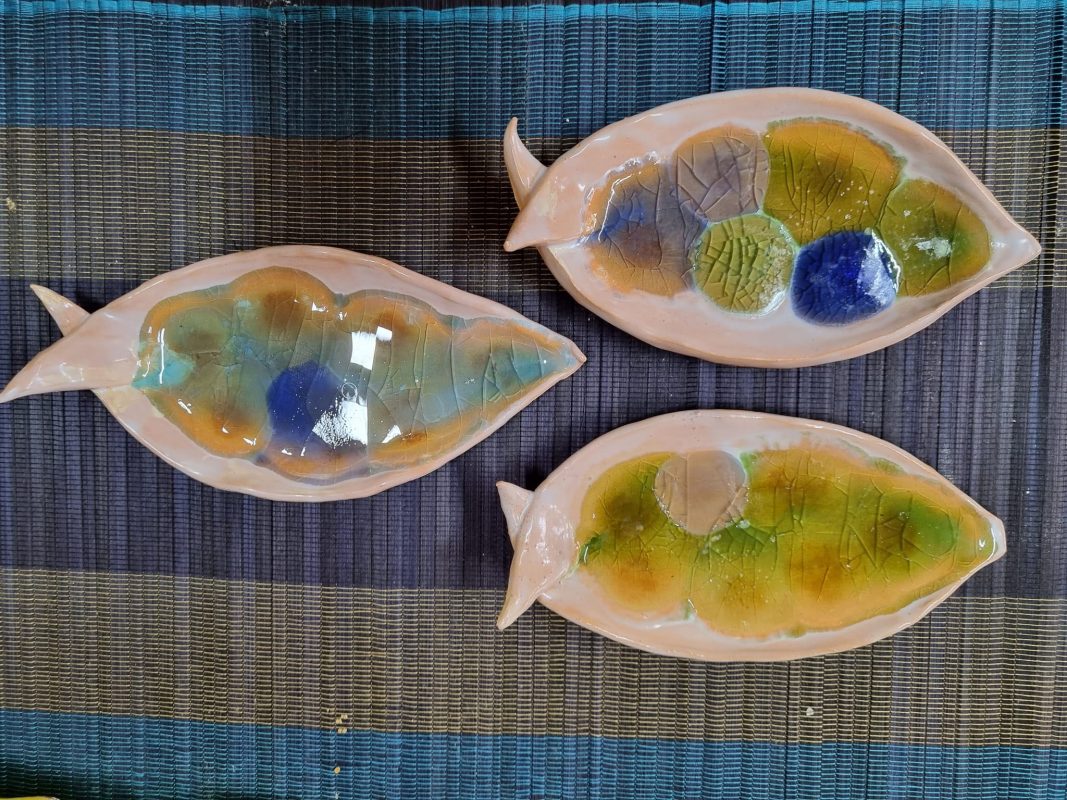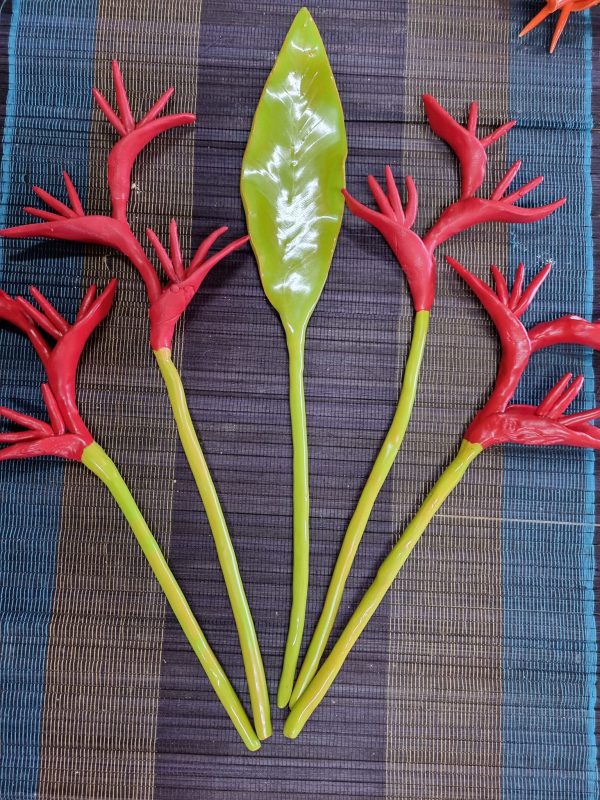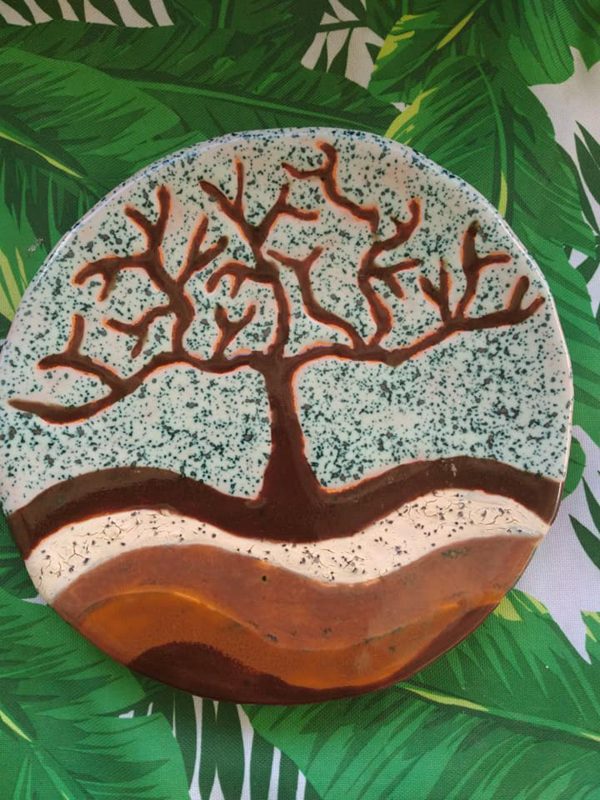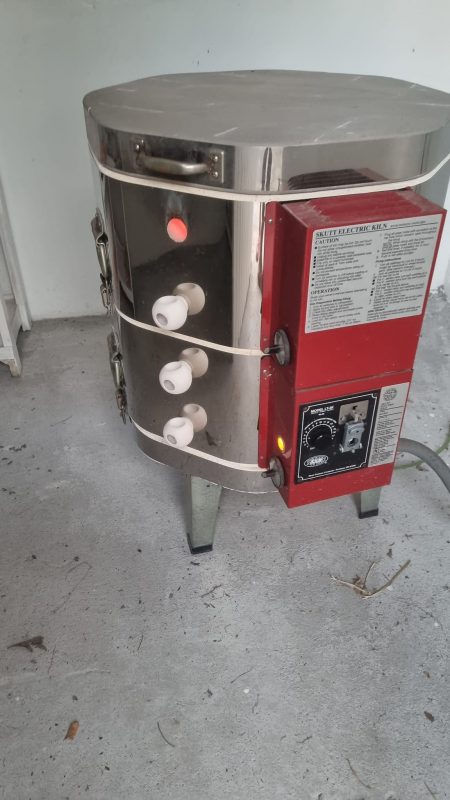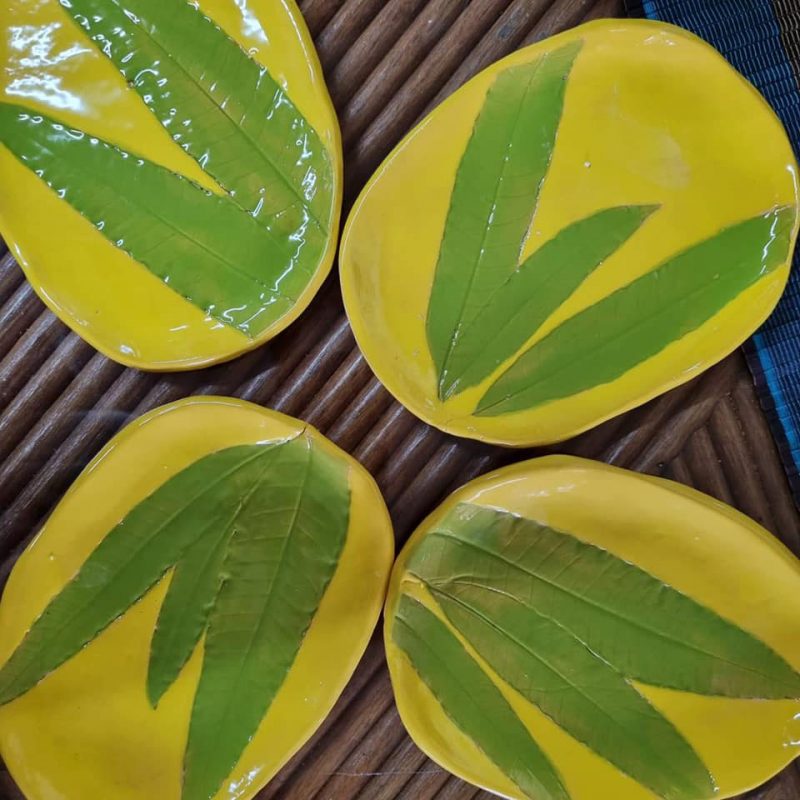Lisa Thompson was one of many artists whose fascinating pieces caught the eyes of patrons at the Pre-Christmas Exhibition and Sale in the Iwokrama Parking Lot last Saturday. The artist who specializes in ceramics and mosaic pieces is a breath of fresh air in the local industry and her work is a rare form of expression.
Lisa, who originally hailed from Adventure, Essequibo Coast has always had an eye for art and despite enjoying it as a subject while attending Anna Regina Multilateral School, she did not function as an artist for most of her life. Shortly after high school, Lisa and her mother Lynette Sylvester (once Ho-shing), who was then an education officer, moved to live in Georgetown. Sylvester also served as a principal at the Carnegie School of Home Economics.
Lisa completed her education and dabbled in art whenever she was not caught up with motherhood or her career as a social worker.
Over the years, the 53-year-old artist has provided her social work and public health skills to organisations like Help and Shelter, UNICEF, Barbados Embassy, Justice Education Society of British Columbia and USAID. She has mostly managed HIV public health programmes for the US government. As such, her artistic endeavour remained a hobby until now.
“For the first time since I was 16, I don’t have a conventional job… This is different for me but it has allowed me the time to get into pottery, free to explore and experiment,” explained Lisa.
Her vibrant pottery pieces are the result of a new hobby she took up last year while stuck in Canada owing to the pandemic. She was exposed to her new pottery skills through a family friend’s relative, Susan Stannard, who is a seasoned potter having been in the business for 30-odd years. Not only was Stannard kind enough to share her skills with Lisa but she also generously provided the necessary materials.
“She taught me how to use the potter’s wheel, how it works when it comes to glazing, and how to make ceramic tiles,” Lisa said. Having had that exposure, on her return to Guyana, Lisa worked on advancing her new skills.
She was able to buy a kiln and a potter’s wheel from a local artist and she also bought a slab rolling table. During her interview with The Scene, Lisa enthusiastically showcased her studio where she keeps all of her tools, brushes and glazes.
In one part of her studio, she had unfinished pottery that was drying, noting that it takes eight to ten days for the drying process to be completed. Drying the clay properly is important as it can explode easily during the firing process if not completely dry.
In another part, a tall shelf was occupied with glazes in various sizes. Lisa showed a board with different colours. Beneath each colour is a written number which indicates which number of glaze she used. Once fire is applied to a glaze, it becomes a particular colour.
The artist explained that clients choose from her palette which colours they want used on the pieces she creates. The numbers below each colour helps her identify which glaze was used to create the requested colour.
Unable to find glaze locally, she has no other choice but to import.
Explaining the pottery process, Lisa said she first has to get her clay, which she often sources from Saxacalli; sometimes friends take care of bringing her the clay. She then soaks the clay in buckets of water for days, during which time she will try diluting it by mashing it with her hands to create a puree before foreign particles are removed. The clay is then left to dry for a bit, after which she kneads in what is called grog, which is ground clay brick. The grog gives the clay the right consistency to prevent it from exploding in the kiln. Lisa then uses her potter’s wheel to mould the clay into the shape of pottery she wants.
This part of the process, the artist enthused, is the most relaxing and therapeutic. It is her favourite part. She lets the piece dry before she fires it for the first time, where it becomes terracotta (baked earth) resulting in it’s natural brownish-orange colour. The pottery goes through a second firing and can be glazed or not. Lisa prefers to glaze her pottery as she loves vibrant colours.
Firing the pottery when it is glazed is the most anxious and exhilarating part of the process for the artist who explained that this reveals the result of her colours. The firing process takes four hours to complete, then she has to wait several more hours for the pottery to cool before she can see what it looks like. Chuckling, she noted it has taught her great patience.
Her pottery pieces take an average of three weeks to complete.
Prior to her interest in pottery, the artist shared about seeing a young woman creating art with stained glass many years ago which piqued her interest. She inquired about it and on returning to Guyana, ensured she was equipped with glass cutters. Lisa then wasted no time, going to Royal Woodworking General Store where she collected pieces of mirror and broken glass on which she practiced her cutting technique.
That was about 15 years ago, and during that time she took up mosaic art, then some years later, began making mosaic table tops. She sourced the furniture from Liana Cane Furniture Factory.
The self-taught artist also dabbled a bit in batik and tie-dyeing.
Lisa shared that she is most comfortable making new pottery when she feels inspired, instead of filling orders. While she makes custom pieces, she does not take many orders.
Many of Lisa’s pottery pieces incorporate pieces of glass, which creates a beautiful effect when the light bounces off them.
Since taking up pottery, the artist has exhibited and sold her pieces at a farmer’s market last December, then recently at the exhibition at Iwokrama’s Parking Lot. She said patrons always tell her they love the vibrant colours of her pieces. “And, that’s what I love about it. I love colour and vibrancy. So, it’s really awesome when you make something that you think is wonderful and then a total stranger also thinks it’s wonderful. It’s a really good feeling,” enthused Lisa.
One of her most recent designs was imprinted with mango leaves from her yard. This beautiful piece is a matching set of four.
Lisa’s work can be found on Facebook at Scarlet Ibis Pottery.

